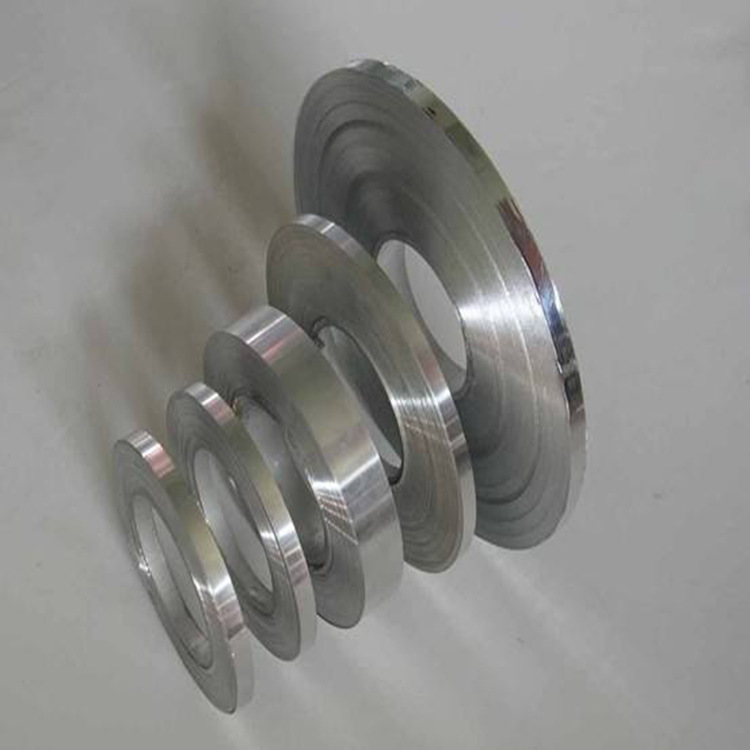Fins material and specific material grade
Fins material introduction and specific material grade
Fins are thin, extended surfaces attached to the outer surface of heat exchanger tubes or other objects to enhance their heat transfer capabilities. The material used to make fins plays a crucial role in determining the overall performance and efficiency of the heat exchanger. When selecting fin materials for heat exchangers, engineers must balance factors such as thermal conductivity, corrosion resistance, mechanical strength, weight, and cost. Aluminum fins, like Alloy 1100 and 3003, are ideal for their excellent thermal conductivity, lightweight nature, and corrosion resistance, making them suitable for aircooled applications. Copper fins, such as C11000 and C12200, offer superior thermal conductivity and are chosen for highperformance needs despite higher costs. Stainless steel fins, including 304 and 316 grades, provide excellent corrosion resistance and mechanical strength, fitting for harsh environments. Carbon steel fins, like ASTM A1008 and A36, are costeffective for less corrosive conditions. Titanium fins, particularly Grade 2, are selected for their outstanding corrosion resistance and strengthtoweight ratio in aggressive environments. Hybrid fins, combining materials like copper and aluminum, are used to optimize performance and cost.
1. Aluminum Fins
Characteristics:
Thermal Conductivity: Aluminum has a high thermal conductivity, which enhances the efficiency of heat transfer.
Weight: Being lightweight, aluminum reduces the overall weight of the heat exchanger.
Corrosion Resistance: Natural oxide layer forms on aluminum surfaces, protecting against corrosion.
Manufacturability: Easily extruded and fabricated into complex shapes.
Specific Grades:
Alloy 1100:
Composition: 99.0% min aluminum.
Properties: Excellent corrosion resistance, good workability, high thermal and electrical conductivity.
Applications: Heat exchangers, chemical equipment, and food handling.
Alloy 3003:
Composition: Aluminum with 1.2% manganese.
Properties: Better mechanical properties than 1100, good corrosion resistance, easily welded.
Applications: Radiators, evaporators, and air conditioners.
Alloy 6061:
Composition: Aluminum with silicon and magnesium.
Properties: High strength, good corrosion resistance, heattreatable, excellent machinability.
Applications: Heat exchangers, structural components, automotive, and aerospace parts.
Alloy 6063:
Composition: Aluminum with magnesium and silicon.
Properties: Excellent extrudability, good mechanical properties, high corrosion resistance.
Applications: Architectural applications, window frames, irrigation tubing.
2. Copper Fins
Characteristics:
Thermal Conductivity: Copper has the highest thermal conductivity among common fin materials, facilitating rapid heat transfer.
Malleability: Highly malleable, allowing for intricate fin designs.
Corrosion Resistance: Good resistance to corrosion in many environments, though it can tarnish and form patina over time.
Specific Grades:
C11000 (Electrolytic Tough Pitch Copper):
Composition: 99.9% copper.
Properties: High electrical and thermal conductivity, excellent formability, good solderability.
Applications: Electrical applications, heat exchangers, plumbing.
C12200 (Phosphorus Deoxidized Copper):
Composition: 99.9% copper, 0.0150.040% phosphorus.
Properties: Enhanced weldability and formability, good corrosion resistance.
Applications: Heat exchangers, boiler components, chemical processing.
3. Stainless Steel Fins
Characteristics:
Corrosion Resistance: Superior resistance to corrosion, especially in aggressive environments.
Mechanical Strength: High tensile strength, durability, and resistance to deformation.
Temperature Resistance: Maintains strength and corrosion resistance at high temperatures.
Specific Grades:
304 Stainless Steel (AISI 304):
Composition: 18% chromium, 8% nickel.
Properties: Excellent corrosion resistance, good formability, nonmagnetic.
Applications: Food processing equipment, chemical containers, heat exchangers.
316 Stainless Steel (AISI 316):
Composition: 16% chromium, 10% nickel, 2% molybdenum.
Properties: Superior corrosion resistance to chlorides, hightemperature strength.
Applications: Marine environments, chemical processing, medical equipment.
321 Stainless Steel (AISI 321):
Composition: 17% chromium, 9% nickel, stabilized with titanium.
Properties: Excellent hightemperature strength, resistance to intergranular corrosion.
Applications: Aircraft exhaust systems, heat exchangers, furnace parts.
4. Carbon Steel Fins
Characteristics:
CostEffective: Lower cost compared to stainless steel and copper.
Adequate Performance: Sufficient heat transfer capabilities for many industrial applications.
Mechanical Properties: Good strength and durability.
Specific Grades:
ASTM A1008:
Composition: Low carbon content.
Properties: Good formability, surface finish, and welding properties.
Applications: Automotive panels, structural components, heat exchanger fins.
ASTM A366:
Composition: Commercial quality, low carbon steel.
Properties: Excellent formability, moderate strength.
Applications: Appliances, metal furniture, heat exchanger fins.
ASTM A36:
Composition: Structural steel with higher carbon content.
Properties: High strength, good weldability.
Applications: Structural components, industrial heat exchangers.
International Standards:
EN 10130:
Properties: Covers coldrolled lowcarbon steel flat products for cold forming.
Applications: Automotive, household appliances, heat exchanger fins.
JIS G3141:
Properties: Specifies coldreduced carbon steel sheet coils and strips.
Applications: Various applications including heat exchanger fins.
5. Titanium Fins
Characteristics:
Corrosion Resistance: Outstanding resistance to a wide range of corrosive environments.
StrengthtoWeight Ratio: High strength and low density, reducing the weight of the heat exchanger.
Biocompatibility: Nontoxic and biocompatible, suitable for medical applications.
Specific Grades:
Grade 2 Titanium:
Composition: Unalloyed titanium.
Properties: Excellent corrosion resistance, good weldability, moderate strength.
Applications: Heat exchangers in chemical processing, marine environments, medical devices.
6. Hybrid Fins
Characteristics:
Custom Performance: Combines the benefits of different materials to meet specific performance requirements.
CostEffectiveness: Balances thermal conductivity, strength, and cost.
Examples:
CopperAluminum Hybrid:
Properties: High thermal conductivity of copper with the lightweight and cost advantages of aluminum.
Applications: Specific heat exchangers requiring optimized performance and cost efficiency.


